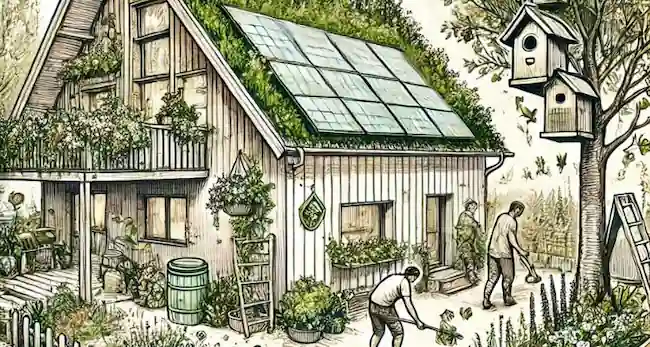Sustainable Gardening: 10 Simple Tips to Support Nature
Taking up sustainable gardening can be a huge benefit. By conserving resources, reducing waste, and creating a thriving ecosystem nature can benefit greatly, as can your wallet!
Whether you’re getting started or looking to enhance your sustainable gardening, we’ve put together 10 essential tips to help you along the way.
1. Choose Native Plants
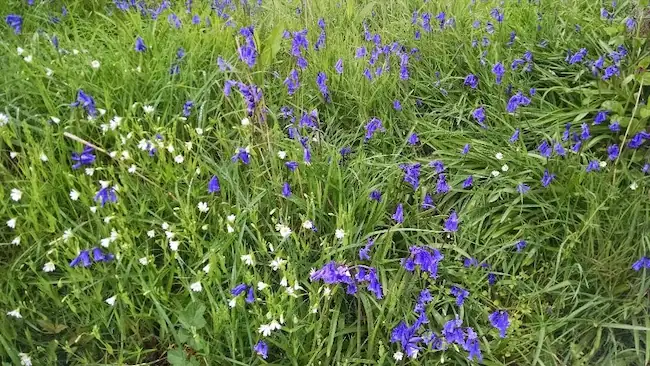
Native plants are adapted to your local climate and soil conditions, making them easier to grow and maintain.
They require less water, fertiliser, and pesticides. Most importantly, they provide vital habitat and food for local wildlife, including pollinators like bees and butterflies. By incorporating native species, you therefore contribute to biodiversity and the health of your local ecosystem.
2. Compost Organic Waste
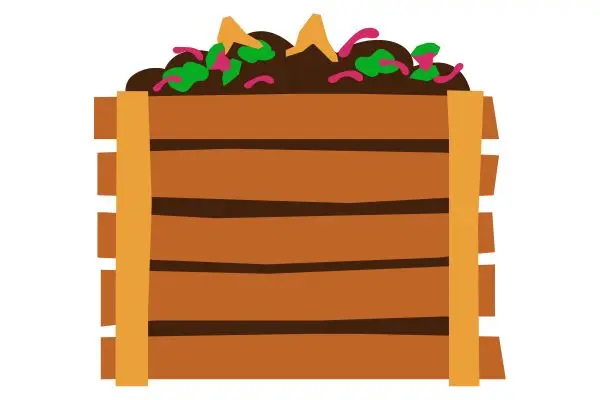
Composting is a fantastic way to recycle organic waste from your kitchen and garden.
By turning vegetable scraps, leaves, grass clippings, and other organic materials into compost, you create a rich, natural fertiliser that improves soil structure, retains moisture, and supports healthy plant growth.
Composting also reduces the amount of waste sent to landfills, lowering your carbon footprint.
3. Practice Water Conservation

Water is a precious resource, and conserving it should be a priority for sustainable gardening.
Install water butts to collect rainwater for irrigating your garden. Water your plants early in the morning or late in the evening when temperatures are cooler to reduce evaporation.
4. Reduce Chemical Use
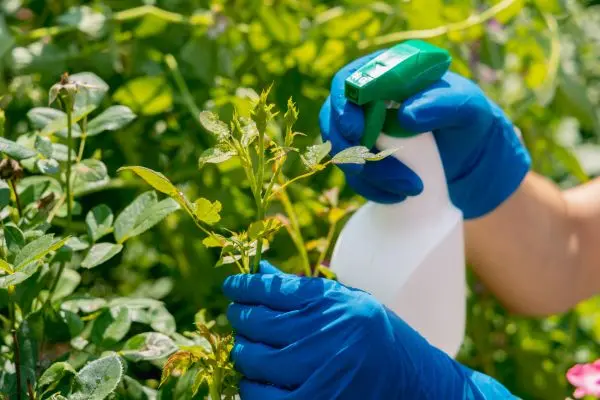
Chemicals like pesticides, herbicides, and synthetic fertilizers can be harmful to environment, beneficial insects, and soil health.
Instead choose organic or natural alternatives whenever possible. Introduce beneficial insects such as ladybugs and lacewings to control pests. Use compost and organic fertilizers to enrich the soil.
If you must use chemicals, do so sparingly and follow the manufacturer’s instructions carefully.
5. Promote Soil Health
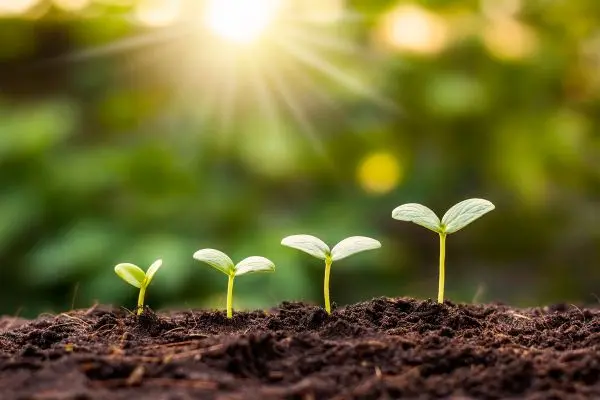
Healthy soil is the foundation of a sustainable garden. Avoid disturbing the soil where you can. Disruption of the soil structure can lead to erosion and reduce natural cycling of nutrients.
Instead, practice no-dig or minimal-dig gardening to maintain soil integrity. Rotate crops annually to prevent soil depletion and reduce pest and disease build-up.
Top with organic matter regularly through compost and maintain ground cover plants to keep the soil fertile and well-structured.
6. Reuse and Recycle Materials

Think creatively about how you can reuse and recycle materials in your garden. Use old containers, pallets, or tires as planters.
You can also re-purpose household items like jars and bottles for cloches or watering cans. Collect fallen leaves and grass clippings for mulch or compost. By finding new uses for old items, you reduce waste and save money.
7. Encourage Biodiversity
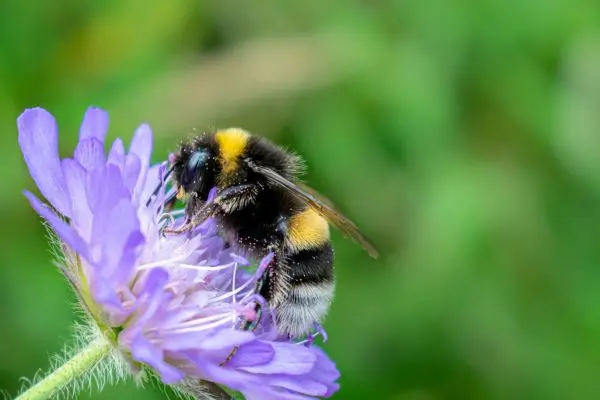
A diverse garden is a resilient garden.
Plant a variety of species to attract different pollinators and beneficial insects. Include flowers that bloom at different times of the year to provide continuous food sources for pollinators.
Where you can, aim to create habitats for birds, insects, and other wildlife by incorporating elements like birdhouses, insect hotels, and water features.
This boost in biodiversity will help keep pest populations in check, supporting a balanced ecosystem and potentially a rewilding of your garden space!
8. Incorporate Perennials
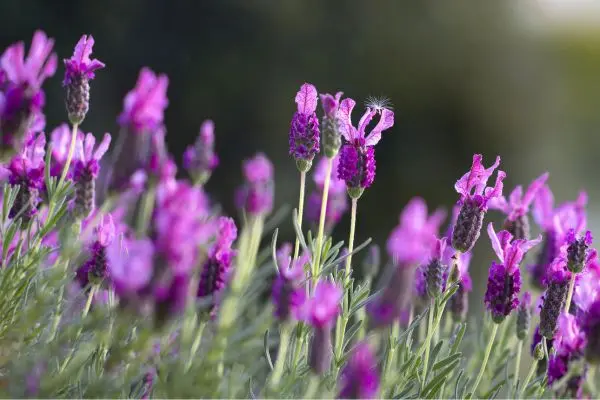
Perennial plants, which live for more than two years, are a sustainable choice for your garden.
They require less maintenance, reduce soil disturbance, and provide continuous habitat for wildlife. Examples of readily available perennials include lavender, rhubarb, and certain herbs like rosemary and thyme.
9. Grow Your Own Food
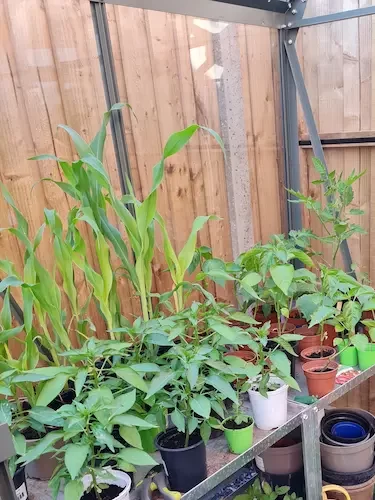
Growing your own fruits, vegetables, and herbs is a great way to ensure you have access to fresh, nutritious produce while reducing your carbon footprint.
It eliminates the need for transportation, packaging, and storage associated with store-bought produce.
Start with easy-to-grow crops like tomatoes, lettuce, and herbs, and expand your garden as you gain confidence. You’ll find a great guide to vegetable growing here from Garden’s World.
10. Utilise Mulch

Mulching your garden beds has several benefits. It helps retain soil moisture, suppress weeds, regulate soil temperature, and add organic matter to the soil as it decomposes.
Use natural mulches like straw, wood chips, or leaves. This not only keeps your garden healthy, but also reduces the need for frequent watering and chemical herbicides.
Sustainable Gardening: Benefiting You & Nature

Sustainable gardening is a rewarding practice that benefits you and the environment.
These tips can help you create a garden that is productive, beautiful, and eco-friendly. Remember, every small step towards sustainability makes a difference. Whether you’re a novice or an experienced gardener, there’s always room to grow and improve.
Start with one or two of these tips and gradually incorporate more into your gardening routine. Let us know how you get on!
For more insights, we recommend you check out the below resources:
Rewilding Your Garden: Simple Tips to Create a Wildlife Haven
Home Improvements & Actions to Support Nature
Urban Farming: Benefits, Examples and Tips to Get Started
Lastly, we’d love to hear your own gardening tips! Let us know in the comments section below or through our social media channels, linked at the bottom of this page. Happy gardening!


